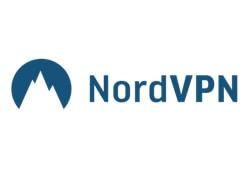How to protect your home: 10 tips to prevent digital hacks on IoT connected homes

Modern connected homes come with risks – unprotected home Wi-Fi can be hacked into, with some dangerous consequences. It becomes especially dangerous if the home is equipped with many connected IoT (Internet of Things) devices.
Hacking into one would allow criminals to access the whole network, forcing smart devices to behave in any way that they want. Identity theft can also result in a takeover of bank accounts, Social Security numbers and other private, vulnerable information.
Some methods that are usually used to detect and fix network problems can become powerful and easy-to-use hacking devices in the hands of criminals. For example, sniffing is a method that allows to see the data on a user’s network by tricking the network into passing the data to hacker’s computer first.
“New smart devices might actually have more problems than a house computer, which usually undergoes more rigid security control. Manufacturers keep producing various new Internet-connected things, often without taking the time to use the most secure technology,” said Marty P. Kamden, CMO of NordVPN (Virtual Private Network). “Your most vulnerable device could be a video camera or a network-connected printer. That device can compromise all network. Some of the most vulnerable IoTs that can have the most serious consequences if hacked include self-driving cars and medical devices.”
NordVPN provides basic security advice that each home needs to follow in order to protect their network.
- Use antivirus software. One of the basic rules is to use a reliable antivirus. Unfortunately, users must do their own research in order to choose the antivirus they trust, since opinions vary among different experts. Not all antivirus software is safe, as shown in the recent case with the Russian Kaspersky Lab antivirus that was used by Russian hackers to obtain NSA files.
- Use a firewall. The router must have up to date firewall software to protect from the newest potential hacker-installed malware that could, for instance, be used to steal one’s personal data.
- Enable two-factor authentication on your online accounts. Signing up for tw0-factor authentication with online accounts makes it harder for fraudsters to steal one’s identity. And even if it’s not foolproof protection from hackers, having a two-factor authentication is definitely better than signing in without it.
- When shopping online, use mobile or e-wallets. E-wallets are said to make online checkouts simpler and more secure. Payment processors, such as Apple Pay, PayPal, Google Wallet and others are already starting to implement this one-click method of payment.
- Install a VPN. VPNs are one of essential security mechanisms to protect personal networks from prying eyes., as they encrypt all the data shared between the Internet and VPN server. NordVPN uses advanced encryption protocols, has extensive global coverage and no logs policy.
- Change the default login information on the home router. It’s easy to change the default admin name and password – and it would make a hacker’s job much more difficult. After new changes are made, it’s important to log out.
- Don’t click on suspicious emails. Emails used for phishing will bear attachments, and they can even seemingly come from a friend. Clicking on a link that comes with a legitimate-looking email can expose the whole home network to the danger of being hacked.
- Always update the systems of all connected devices. The operating systems on all house computers, tablets, phones and other devices should be up to date.
- Double-check the security features of each new device that is brought home. A new camera or printer might be efficient and perform very well, but it’s important to double-check their security features. It’s also better to turn their web interfaces off.
- Create another network. Create a new network – most routers will allow guest network connection. Exclude IoT devices that look least secure from the new network.
Comment on this article below or via Twitter @IoTGN
